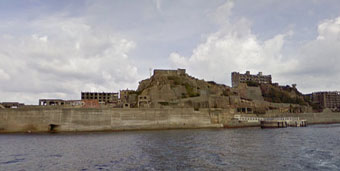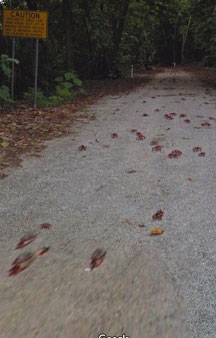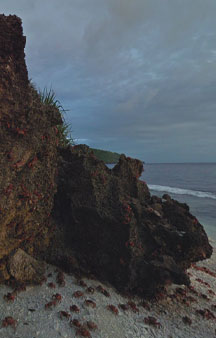Christmas island where a great yellow ant vs red crab war takes place annually. 360-s vr locations
Link Location Gps ← Find Best directions
Gps Coordinates / -10.4638521,105.7080882
Crab Island Christmas Island Australia Tour Locations
GPM6+4Q6, Christmas Island 6798, Christmas Island
The Christmas Island red crab (Gecarcoidea natalis) is a species of land crab that is endemic to Christmas Island and Cocos (Keeling) Islands in the Indian Ocean. Although restricted to a relatively small area, an estimated 43.7 million adult red crabs once lived on Christmas Island alone, but the accidental introduction of the yellow crazy ant is believed to have killed about 10–15 million of these in recent years. Christmas Island red crabs make an annual mass migration to the sea to lay their eggs in the ocean. Although its population is under great assault by the ants, as of 2020 the red crab had not been assessed by the International Union for Conservation of Nature (IUCN) and it was not listed on their Red List.
Gps Coordinates / -10.4641933,105.7078988
Christmas Island red crabs are large crabs with the carapace measuring up to 116 millimetres wide. The claws are usually of equal size, unless one becomes injured or detached, in which case the limb will regenerate. The male crabs are generally larger than the females, while adult females have a much broader abdomen (only apparent above 3 years of age) and usually have smaller claws. Bright red is their most common color, but some can be orange or the much rarer purple.
Link Location Gps / Gps Link -10.464386 / Gps Link -10.4654196 / Gps Link -10.465235
Gps Coordinates / -10.464386,105.7080178 / -10.4654196,105.7098297 / -10.465235,105.7100683
Like most land crabs, red crabs use gills to breathe and must take great care to conserve body moisture. Although red crabs are diurnal, they usually avoid direct sunlight so as not to dry out, and, despite lower temperatures and higher humidity, they are almost completely inactive at night. Red crabs also dig burrows to shelter themselves from the sun and will usually stay in the same burrow through the year. During the dry season, they will cover the entrance to the burrow to maintain a higher humidity inside, and will stay there for 3 months until the start of the wet season. Apart from the breeding season, red crabs are solitary animals and will defend their burrow from intruders.
Link Location Gps / Gps Link -10.4650225 / Gps Link -10.4651998 / Gps Link -10.4652552
Gps Coordinates / -10.4650225,105.7101752 / -10.4651998,105.7101004 / -10.4652552,105.7101923
For most of the year, red crabs can be found within Christmas Islands' forests. Each year, however, they migrate to the coast to breed; the beginning of the wet season (usually October/November) allows the crabs to increase their activity and stimulates their annual migration. The timing of their migration is also linked to the phases of the moon. During this migration, red crabs abandon their burrows and travel to the coast to mate and spawn. This normally requires at least a week, with the male crabs usually arriving before the females. Once on the shore, the male crabs excavate burrows, which they must defend from other males.
Link Location Gps / Gps Link -10.4664401 / Gps Link -10.4668424 / Gps Link -10.4625291
Gps Coordinates / -10.4664401,105.7116647 / -10.4668424,105.7110427 / -10.4625291,105.7066153
Mating occurs in or near the burrows. Soon after mating the males return to the forest while the females remain in the burrow for another two weeks. During this period they lay their eggs and incubate them in their abdominal brood pouch to facilitate their development.
Link Location Gps / Gps Link -10.4626818 / Gps Link -10.4628028 / Gps Link -10.4628324
Gps Coordinates / -10.4626818,105.7067622 / -10.4628028,105.7067661 / -10.4628324,105.7068789
At the end of the incubation period the females leave their burrows and release their eggs into the ocean, precisely at the turn of the high tide during the last quarter of the moon. The females then return to the forest while the crab larvae spend another 3–4 weeks at sea before returning to land as juvenile crabs.
Link Location Gps / Gps Link -10.4630929 / Gps Link -10.4302518 / Gps Link -10.4302518 / Gps Link -10.4299548
Gps Coordinates / -10.4630929,105.7071248 / -10.4637472,105.7076726 / -10.4302518,105.6688453 / -10.4299548,105.6693194
The eggs released by the females immediately hatch upon contact with sea water and clouds of crab larvae will swirl near the shore until they are swept out to sea, where they remain for 3–4 weeks. During this time, the larvae go through several larval stages, eventually developing into shrimp-like animals called megalopae. The megalopae gather near the shore for 1–2 days before changing into young crabs only 5 mm across.
Gps Coordinates / -10.4640244,105.7079949
Surveys have found a density of 0.09–0.57 adult red crabs per square metre, equalling an estimated total population of 43.7 million on Christmas Island. Less information is available for the population in the Cocos (Keeling) Islands, but numbers there are relatively low. Based on genetic evidence, it appears that the Cocos (Keeling) red crabs are relatively recent immigrants from Christmas Island, and for conservation purposes the two can be managed as a single population.
Remote Chrismas islands on the globe view
Aerial View of Chrismas Island








































